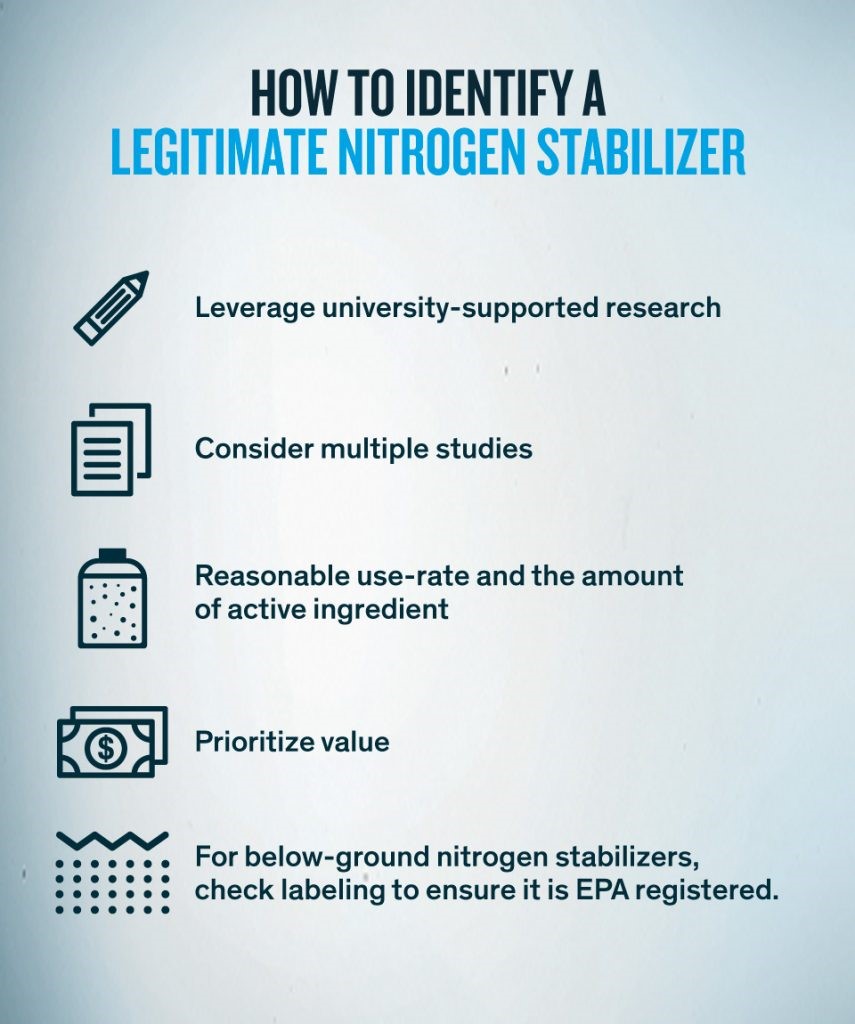The nitrogen stabilizer market is growing. For U.S. farmers, this can be tricky because there are many less than efficacious nitrogen stabilizers available. And, because current commodity prices are challenging, trade negotiations are uncertain, nutrient management regulations are pending and new stabilizer products are being introduced in the marketplace, farmers are now more than ever looking for certainty and consistency in the products they choose.
There is no room for these ineffective nitrogen stabilizers in the market. This is one of the biggest problems in U.S. agriculture today, and the U.S. farmer gets the short end of the stick. As their retailer, this creates an opportunity to raise awareness and educate your farmers on this topic so they can understand, spot and discuss what makes a legitimate stabilizer. This helps them avoid wasting money on something ineffective for their operation and ensure they’re getting the right product.
To help educate and clarify this issue with your farmers, the following criteria can help determine the right nitrogen stabilizer to use:
1. Leverage university-supported research
- Use stabilizers that have been rigorously tested by universities. Farmers should ask their retailers to share academic research that supports the claims that are being touted.
- A great resource to find published research for nitrogen stabilizers is NutrientStar.org, an independent, third-party program that compiles research and data on nutrient management tools.
2. Consider multiple studies
- Having university-supported research is important, but so is having a wide breadth of studies. Continuous study of a specific product shows results over time, impact of multiple weather cycles and provides a stronger sense of validity to the product.
3. Reasonable use-rate and the amount of active ingredient
- Use-rate and amount of active ingredient in a nitrogen stabilizer are telling indicators of the effectiveness of the product. Farmers should take a detailed look at prescribed use-rates of any given product and compare with use-rates noted in their research studies. Some products use higher or unrealistic use-rates in research to help showcase certain results, and this can give a farmer the wrong expectation of how a product may work in their fields.
4. Prioritize value
- The current economics of farming are not as rewarding as a few years ago, and every penny matters. In this case, the only thing worse than low commodity prices is low yield. Like an insurance policy, nitrogen stabilizers can help preserve a farmer’s commodity investments. Nitrogen may not be the yield-limiting factor for farmers every year; however, when it is, it should be protected.
5. For below-ground nitrogen stabilizers, check labeling to ensure it is EPA registered
- Below-ground nitrogen stabilizers that claim to affect soil bacteria must be registered with the EPA under FIFRA (The Federal Insecticide, Fungicide, and Rodenticide Act).
- Use below-ground stabilizers that are EPA registered. Registration requires robust documentation and research to prove the effectiveness of a nitrogen stabilizer product.
Two options that meet this criteria set are Instinct® and N-Serve® nitrogen stabilizers. Instinct and N-Serve maximize nitrogen by extending its availability for up to eight weeks, during critical growth stages for corn and wheat, helping crops deliver the maximum yield at harvest. Over the past 40 years, more than 1,000 field trials and university studies have proven that the technology in Instinct and N-Serve deliver bottom-line results. In addition, Instinct and N-Serve meet the efficacy and environmental safety requirements for EPA registration.[1]
When comparing nitrogen stabilization products, these criteria can help farmers identify gaps and bring up concerns or questions about a product they may be considering. Seeing how nitrogen stabilization products stack up to these criteria is an important conversation you should consider having with your farmers. It can open their eyes to gaps or unresolved issues with the products they currently use and uncover product solutions that may be a better fit for their operation.
